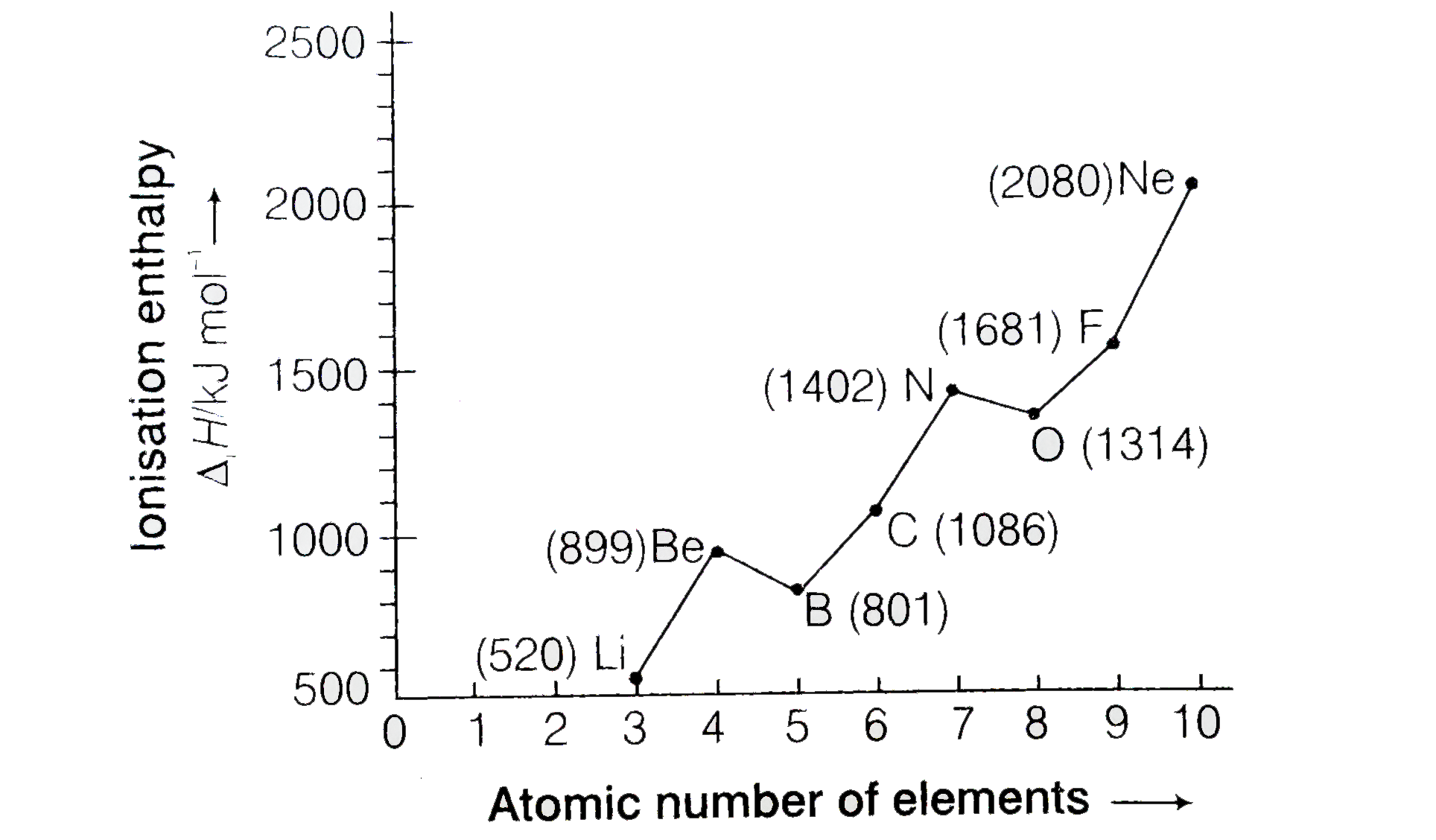Complete Solutions to Short answer types questions of chapter CLASSIFICATION OF ELEMENTS AND PERIODICITY IN PROPERTIES. of Class 11 book with complete answers and questions
| Class 11 | CHEMISTRY |
| Chapter | CLASSIFICATION OF ELEMENTS AND PERIODICITY IN PROPERTIES. |
| NCERT EXEMPLAR | Short answer types questions |
| Number Of Questions | 19 |
| Academic Year | 2023-24 |
The negative value of electron gain enthalpy is less for fluorine than for chlorine . Why?
View SolutionAll transition elements are d-block elements, but all d-block elements are not transition elements. Which the following is true.
View SolutionIdentify the group nad valency of the elements having atomic number 119. Also predict the outermost electronic configuration and write the general formula of its oxide.
View SolutionIonisation enthalpies of elements of second period are given below Ionisation enthalpy/k cal `mol^(-1)`, 520,899,801,1086,1402,1314, 1681, 2080. Match the correct enthalpy with the elements and complete the graph given in the figure. Also write symbols of elements with their atomic number.

View SolutionAmong the elements, B, Al, C and Si,
a) which element has the highest first ionisation enthalpy?
b) which element has the most metallic character? Justify your answer in each case,
View SolutionDescribe the main characteristic properties of s, p, d and f-block elements.
View SolutionChoose the correct order of atomic radii of fluorine and neon (in pm) out of the outpout given below and justify your answer.
View SolutionIllustrate by taking examples of transition elements and non-transition elements that oxidation states of elements are largely based on electronic configuration.
View SolutionNitrogen has positive electron gain enthalpy whereas oxygen has negative. However, oxygen has lower ionisation enthalpy than nitrogen. Explain.
View SolutionFirst member of each group of representative elements (i.e., s and p-block elements) shows anomalous behaviour. Illustrate with two examples.
View Solutionp-block elements form acidic, basic and amphoteric oxides. Explanin each property by giving two examples, and also write the reactions of these oxides with water.
View SolutionHow would you explain the fact that the first ionisation enthalpy of sodium is lower than that of magnesium but its second ionisation enthalpy is higher than that of magnesium?
View SolutionWhat do you undestand by exothermic reaction and endothermic reaction? Give one example of each type.
View SolutionArrange the elements N, P, O and S in the order of
i) increasing first ionisation enthalpy.
ii) increasing non-metallic character.
Give reason for the arrangement assigned.
View SolutionExplain the deviation in ionsation enthalpy of some elements from the general trend by using given figure.

View SolutionExplain the following
a) Electronegatively of elements increase on moving from left to right in the periodic table.
b) Ionisation enthalpy decrease in a group from top to bottom.
View SolutionHow does the metallic and non-metalic character vary on moving from left to right in a period?
View SolutionThe radius of `Na^(+)` cation is less than that of Na atom. Give reason.
View SolutionAmong alkali metals which element do you expect to be least electronegative and why?
View Solution
Short answer types questions questions and complete solutions for chapter CLASSIFICATION OF ELEMENTS AND PERIODICITY IN PROPERTIES. of NCERT CHEMISTRY (HINGLISH) of Class 11